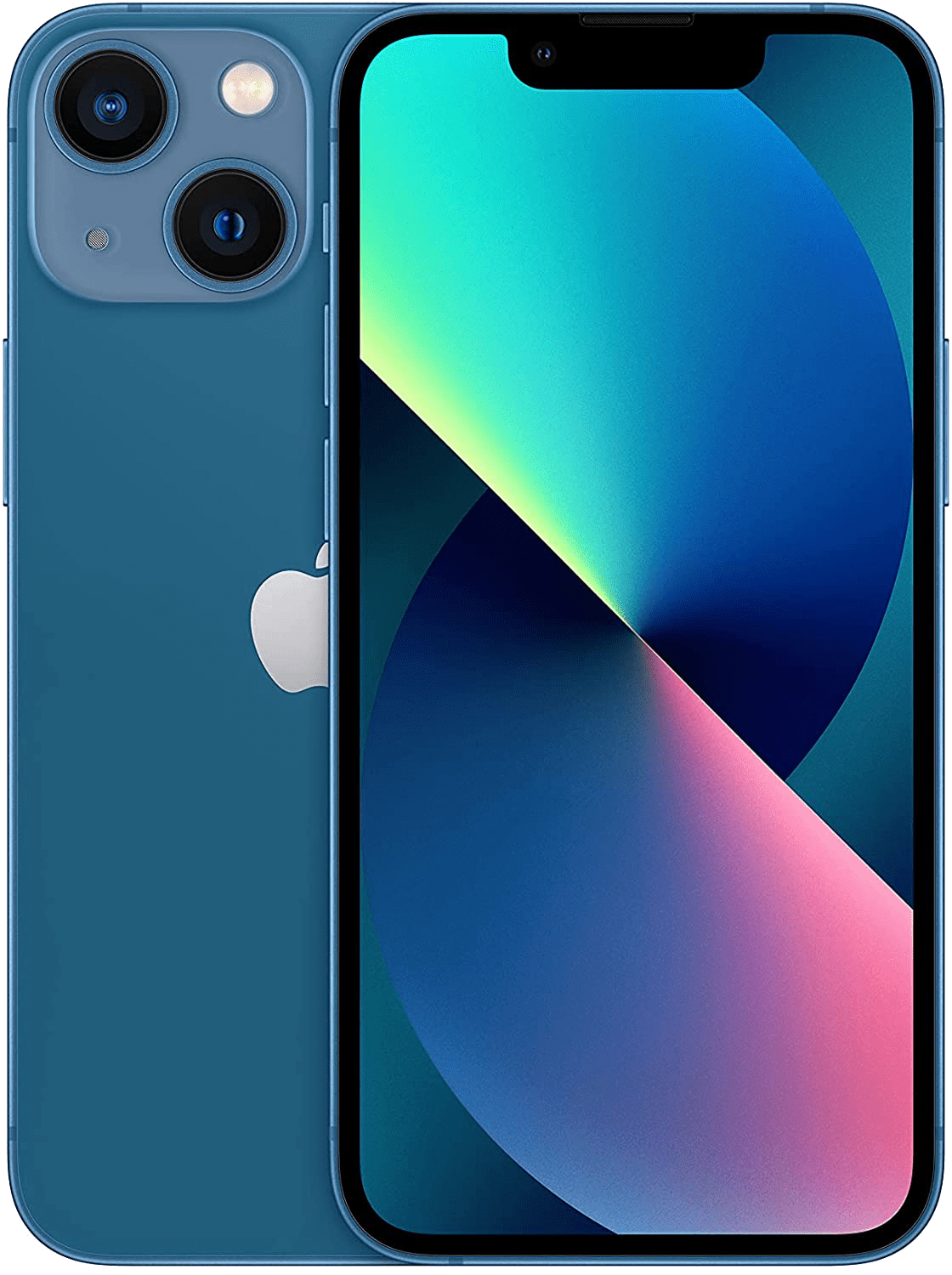
Apple doesn’t like to tinker with a winning formula, so it’s no surprise that the iPhone 13 offers relatively minor updates from the brilliant iPhone 12. But the iPhone 13 Pro has had a massive camera upgrade, and packs even more performance. With the gap between the standard and flagship iPhones now wider than ever, does the iPhone 13 still do enough, or should you start saving for the iPhone 13 Pro? Find out in our iPhone 13 review.
Pros
- Brilliant design
- Well chosen upgrades over predecessor
- Faster than the competition
Cons
- Well beaten by the iPhone 13 Pro
Quick links:
iPhone 13 – overview
Compare the iPhone 13 with the iPhone 12 and it doesn’t look like much has changed. The newer phone looks the same, has much the same screen, and its camera lenses only seem to have moved around a bit.
In truth the two phones do have a lot in common, including decent waterproofing and 5G support, but dig into the specifications and their differences begin to stand out. The iPhone 13 rocks a slightly improved screen and – despite similar headline specs – a much better camera. Apple has added more storage along with some useful new photo and video features. The whole phone is powered by a newer, faster chip – and its battery lasts longer for good measure.
Indeed, the iPhone 13 looks like the kind of thoughtful evolution we’re used to between iPhone generations, but it has a problem. While the iPhone 12 Pro had a better camera than the iPhone 12, the iPhone 13 Pro improves on the standard phone’s camera, screen and processor. There’s much more daylight between the two, so it pays to study the details before making your choice.
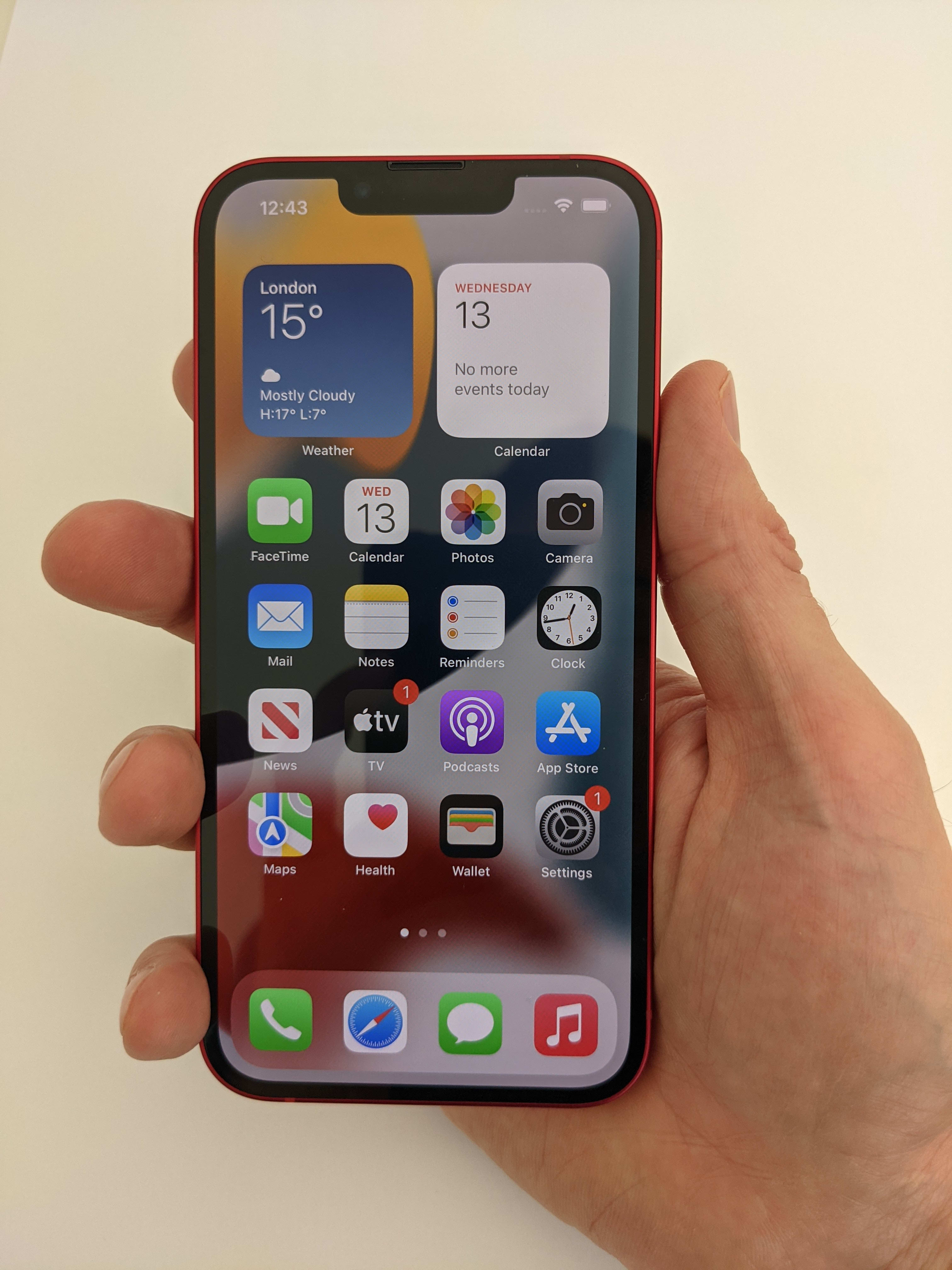
iPhone 13 – design
Face-on it’s hard to tell the difference between an iPhone 12 and iPhone 13. They share the same height and width. The iPhone 13 is slightly deeper and weighs a few grams more, but you can’t really tell. The design is ageing well. The screen glass covers almost the full area of the phone, and is framed by a narrow metal border that offers good knock protection. Adding to this, Ceramic Shield front glass helps prevent a drop becoming a disaster.
The polished glass back panel is similar between generations, too. The new phone’s updated camera means it has a bigger mound, with lenses in a different place – it’s unlikely that an iPhone 12 case will fit the iPhone 13. It’s worth knowing that the rear glass isn’t Ceramic Shield – it’s tough, but it’s more likely to break in a hard drop.
We’re not usually keen on lighter iPhone colours, and the pink offered for the iPhone 13 is particularly pale. While some will opt for this, or Starlight (white), the camera’s big, dark lenses particularly stand out against it. The iPhone 13 looks unobtrusive in Midnight (black) or blue, and particularly bold in red.
Thanks to its small screen borders, the iPhone 13 is on the small side despite its generous 6.1” screen. At 72mm wide, those with medium or bigger hands should find it possible to type single handedly. Our only real grumble about the design is that its straight, metal edges sit less comfortably in the hand than the curved ones found on iPhones up to the iPhone 11.

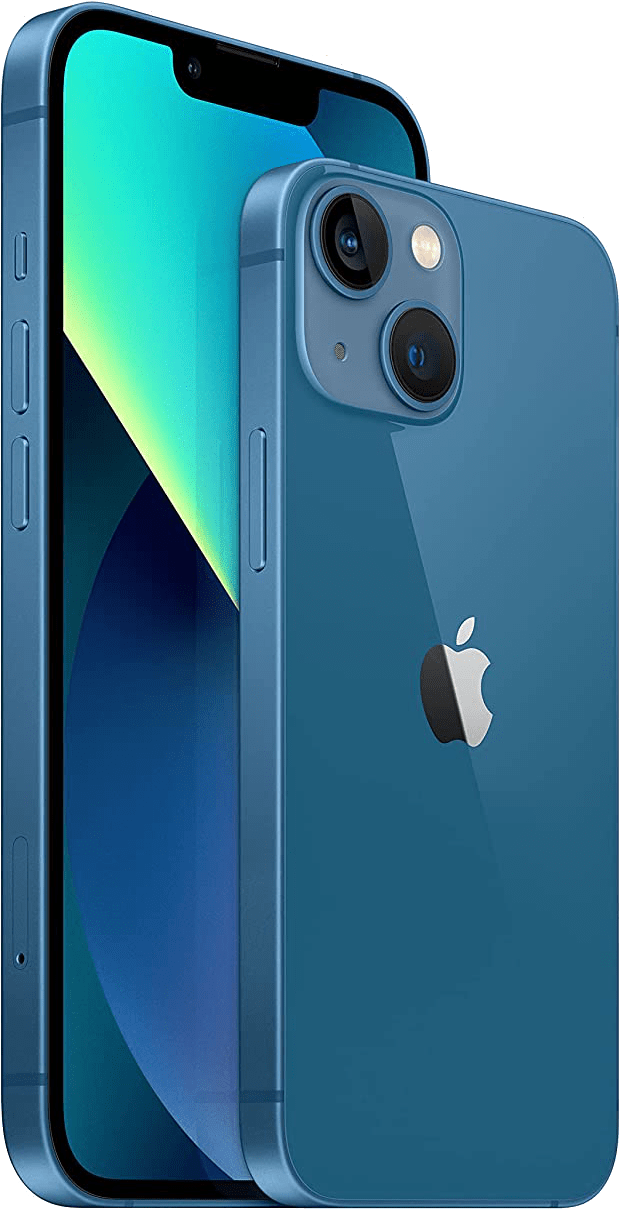
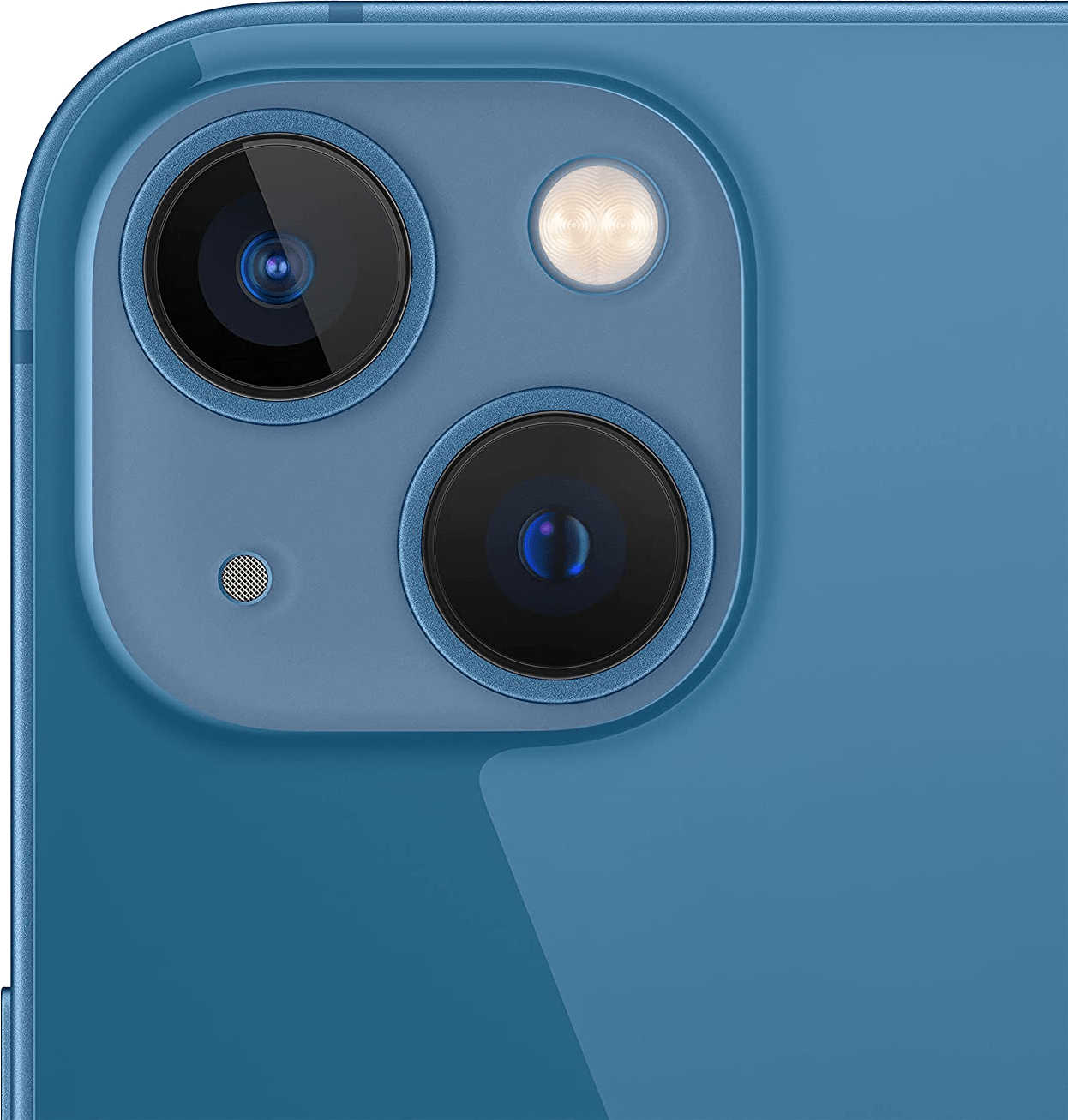
iPhone 13 – display

The iPhone 13 display looks identical to the one from the iPhone 12, but it’s not. Apple says it’s a new panel, and there’s been a small boost to the maximum brightness, now up to 800 nits from 625. Perhaps more significantly, the notch housing the TrueDepth front-facing camera is smaller than before. That’s a good thing, but you may still find it in the way when you’re watching full-screen content. It’s a shame Apple hasn’t switched to the small ‘hole-punch’ cameras used by its competitors.
The iPhone 13’s screen also lags behind the curve when it comes to refresh rate. While some Android competitors have been offering 120Hz performance for a while, Apple has only introduced it for the iPhone 13 Pro and iPhone 13 Pro Max. The standard iPhone 13 makes do with a pedestrian 60Hz.
This is easier to forgive on the iPhone 13 mini, which is unlikely to appeal to the perfectionists and gamers for whom these things matter, but it’s a bigger omission here. Even the ageing Google Pixel 5 offers a 90Hz refresh rate, and many high-end rivals now have 120Hz. The phone still feels smooth and responsive, but it’s odd that Apple didn’t introduce faster refresh rates throughout the range.
iPhone 13 – camera and video performance
Look at the headline specs for the iPhone 13 and you’d be forgiven for thinking it’s carried over the cameras from the iPhone 12. The rear system combines wide and ultra-wide lenses into a 12 megapixel (MP) camera with the same zoom capabilities – 2x optical, and 5x digital.
In fact, the newer phone has some useful upgrades. First off, the new wide camera uses an entirely new sensor. According to Apple, its bigger size and larger 1.7µm pixels help it scoop up 47% more light. In the other big physical change, the camera gets sensor-shift image stabilisation – previously only used in the iPhone 12 Pro Max. Together, these changes ought to improve results, reducing noise and shake in low-light photography.
Though useful, these upgrades were overshadowed by the announcement of two new software features for the iPhone 13. The first, Photographic Styles, is designed to counter criticisms that different phones tend to process photos differently, resulting in different outcomes for things like sharpness and warmth. With Photographic Styles, you can select and customise the setting you prefer, letting you tune the camera to your preferences.
The second, Cinematic Mode, is designed to emulate the tight focus used by filmmakers to create more compelling, cinematic takes. It works in a similar way to Portrait Mode, which keeps your face sharp while allowing the background to blur. In Cinematic Mode, focus automatically shifts to faces and dynamic elements in the scene, drawing the viewer’s attention.
We found that it worked well, typically responding to the changing scene as people came and went, or the camera was panned across. Where it didn’t, it’s possible to edit the focus behaviour after the video has been shot. This makes for an even more powerful feature, although we found it clunky to use in practise.
Overall, the camera has taken a small but worthy step on from the iPhone 12. Low-light photography remains impressive, with the iPhone 13 able to resolve images in astonishingly low light. Videos are crisp and impressively stable too. The only real omission here is the lack of a telephoto lens – otherwise, the iPhone 13 will make a great shot of almost any subject.
iPhone 13 – performance
Geekbench 5 results
CPU single-core scores:
- iPhone 13 Pro – Score= 1,746
- iPhone 13 – Score = 1,723
- iPhone 12 – Score = 1,590
CPU multi-core scores:
- iPhone 13 Pro – Score= 4,899
- iPhone 13 – Score = 4,612
- iPhone 12 – Score = 4,052
3DMark Wild Life Extreme results
Best scores:
- iPhone 13 Pro – Score= 3,118
- iPhone 13 – Score = 2,523
- iPhone 12 – Score = 2,175
Worst scores (20-minute loop):
- iPhone 13 Pro – Score= 2,235
- iPhone 13 – Score = 1,983
- iPhone 12 – Score = 1,494
It wouldn’t be a new iPhone without a new processor, and the iPhone 13 gets Apple’s new A15 Bionic chip throughout the range. Look closer, though, and it’s not quite that straightforward.
While the iPhone 13 and iPhone 13 mini get the standard version with a four-core graphics processing unit (GPU), the Pro-level models get an extra GPU core. On paper, this means that the standard iPhone 13 is at a slight disadvantage, particularly when it comes to complex graphics and physics operations. In practise, the gap is surprisingly large.
We test a phone’s processing power using the Geekbench 5 benchmark. Here, the iPhone 13 was comfortably faster than the iPhone 12, notching up a single-core score of 1,723 (versus 1,590), and a multi-core score of 4,612 (4,052). The iPhone 13 Pro managed slightly higher scores, but there wasn’t much in it.
Things were different across our other tests. In the Geekbench 5 Compute benchmark, the iPhone 13 scored a healthy 10,505 against the iPhone 12’s 9,370 – but the iPhone 13 Pro weighed in with a massive 14,439.
We ran the 3DMark Wild Life Extreme benchmark. The iPhone 13 scored a peak of 2,523, a healthy 16% improvement over the iPhone 12. However, the iPhone 13 Pro peaked at 3,188, a stunning 44% step up from the iPhone 12 Pro.
As with all iPhones, the iPhone 13 and iPhone 13 Pro can’t sustain this level of performance, as they have to slow down to avoid overheating. Even so, the iPhone 13 Pro’s worst score of 2,235, recorded after 20 minutes of benchmarking, isn’t that far behind the iPhone 13’s best score (2,523).
It’s no surprise to see the latest iPhone improving over its predecessor, or that it annihilates the competition – no Android phone even gets close. But it is new to see one iPhone model so comprehensively outperforming another from the same family. The iPhone 13 is quicker than most people will ever need, but the iPhone 13 Pro is even faster.
iPhone 13– battery performance
Apple says that the iPhone 13’s battery will last for up to 19 hours when playing back video. On the surface of it, that’s two hours more than the iPhone 12, but our tests suggest there’s been a bigger step forward.
We got the iPhone 12 to loop an HD film for just over 14 hours – enough for a London to Rio flight. That’s not bad at all, but the iPhone 13 was almost true to Apple’s 19-hour claim. It managed 18 and three-quarter hours in the same test. That’s long enough to fly from London to Perth – and to get you through customs at both ends.
That’s impressive durability, particularly given that this test keeps the screen and speakers on constantly. In more typical use, you’d comfortably get two days’ from a charge provided you didn’t overdo the gaming or video calls.
When the battery is flat, the iPhone 13 charges quickly. Connected to a 20w charger it hit 50% in 29 minutes, 80% in 55 minutes, and was fully charged in less than two hours. Alternatively you can drop it on a wireless charging pad – it charged happily on the dock in a modern car.
Battery life (movie playback)*
- iPhone 13 Pro – Time = 19hr 2mins
- iPhone 13 – Time = 18hrs 46mins
- iPhone 12 – Time = 13hrs 50mins
Charge Time (0-80%)
- iPhone 13 Pro – Time = 53mins
- iPhone 13 – Time = 55mins
- iPhone 12 – Time = 53mins
*Battery life test involves looping the playback of an HD movie from fully charged until the phone shuts down.
iPhone 13 – options and additional features
The iPhone 13 is an expensive phone, but it’s better value than its predecessor. The new phone starts with 128GB of storage – double the entry-level iPhone 12 – but at £779 it costs £20 less than the iPhone 12 did at launch. Sticking with Apple’s prices, the 256GB iPhone 13 will set you back £879, while the range-topping 512GB option is £1,079.
Comparing models with like-for-like storage, the iPhone 13 costs £70 less than the equivalent iPhone 12 did at launch. And even now that Apple has dropped its prices for the older phone, buying a 128GB iPhone 12 would still save you only £50 compared to the equivalent iPhone 13. If you’re buying new, get the iPhone 13.
You can buy an iPhone 13 in five colours – Starlight (white), Midnight (black), blue, pink or red. You’ll only find the phone and a USB-C to Lightning cable in the box – no charger or headphones are supplied. Like the rest of the range, the iPhone 13 supports Apple’s MagSafe accessory system, which includes cases and wireless charging docks.

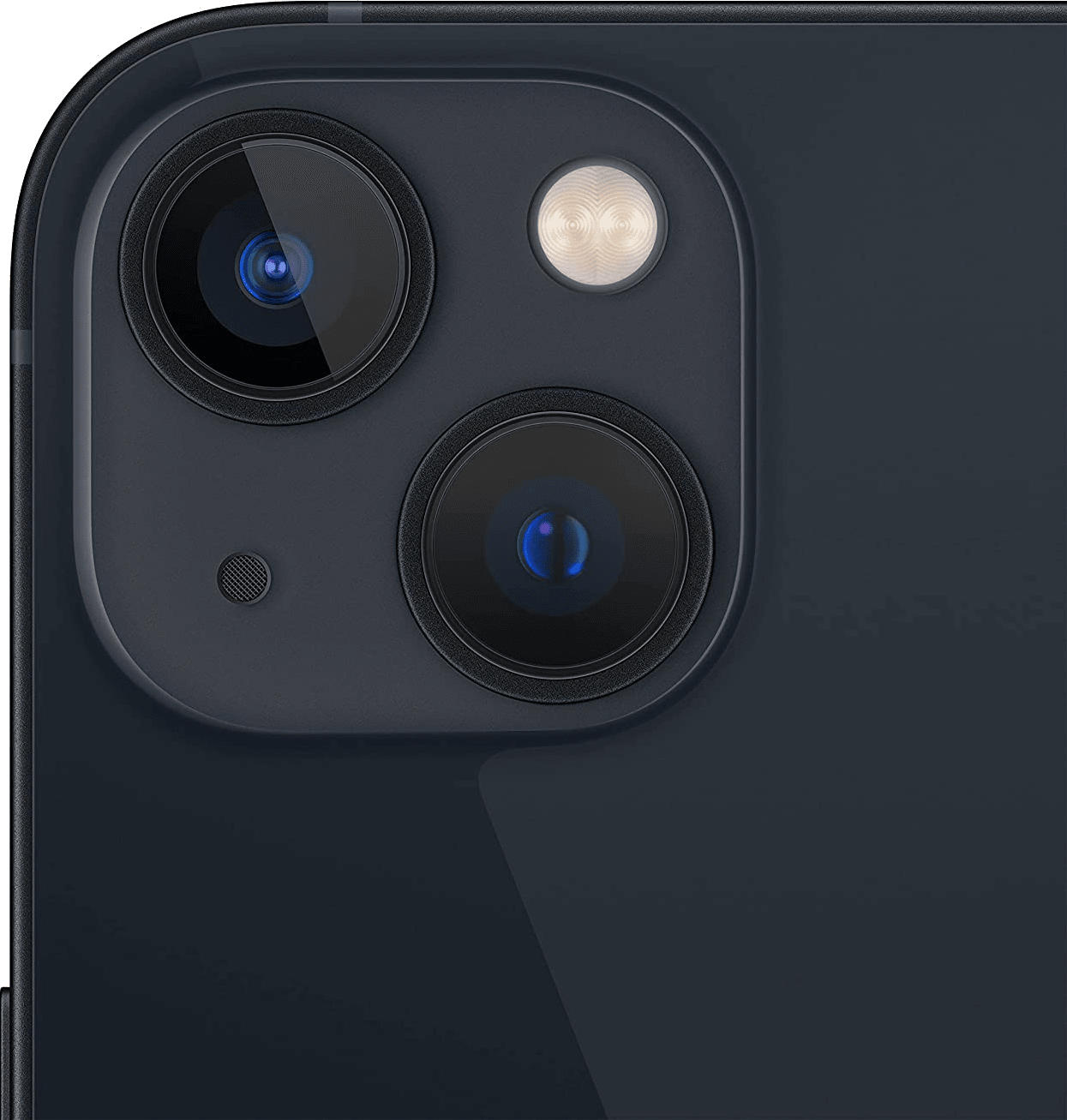
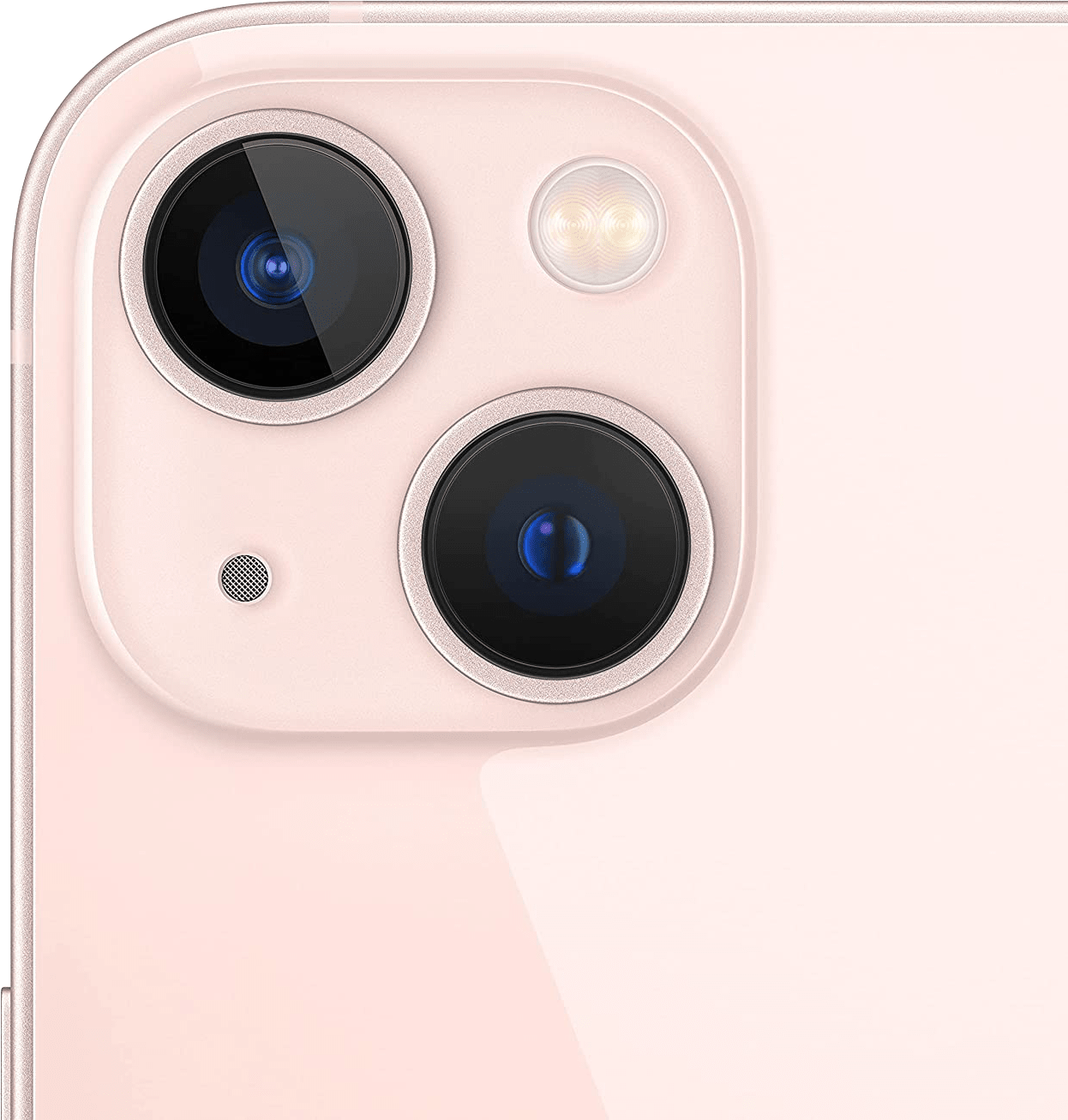
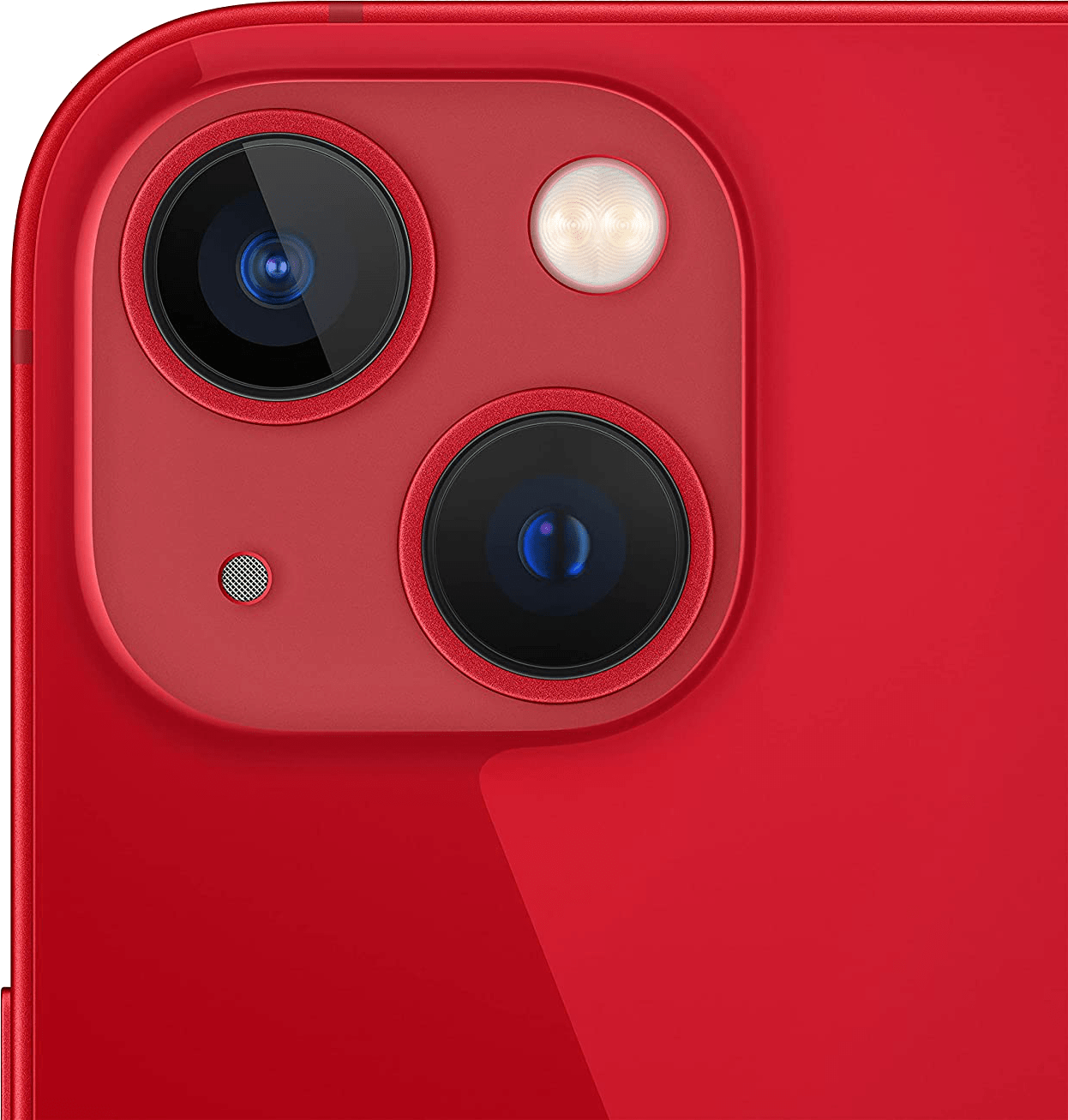
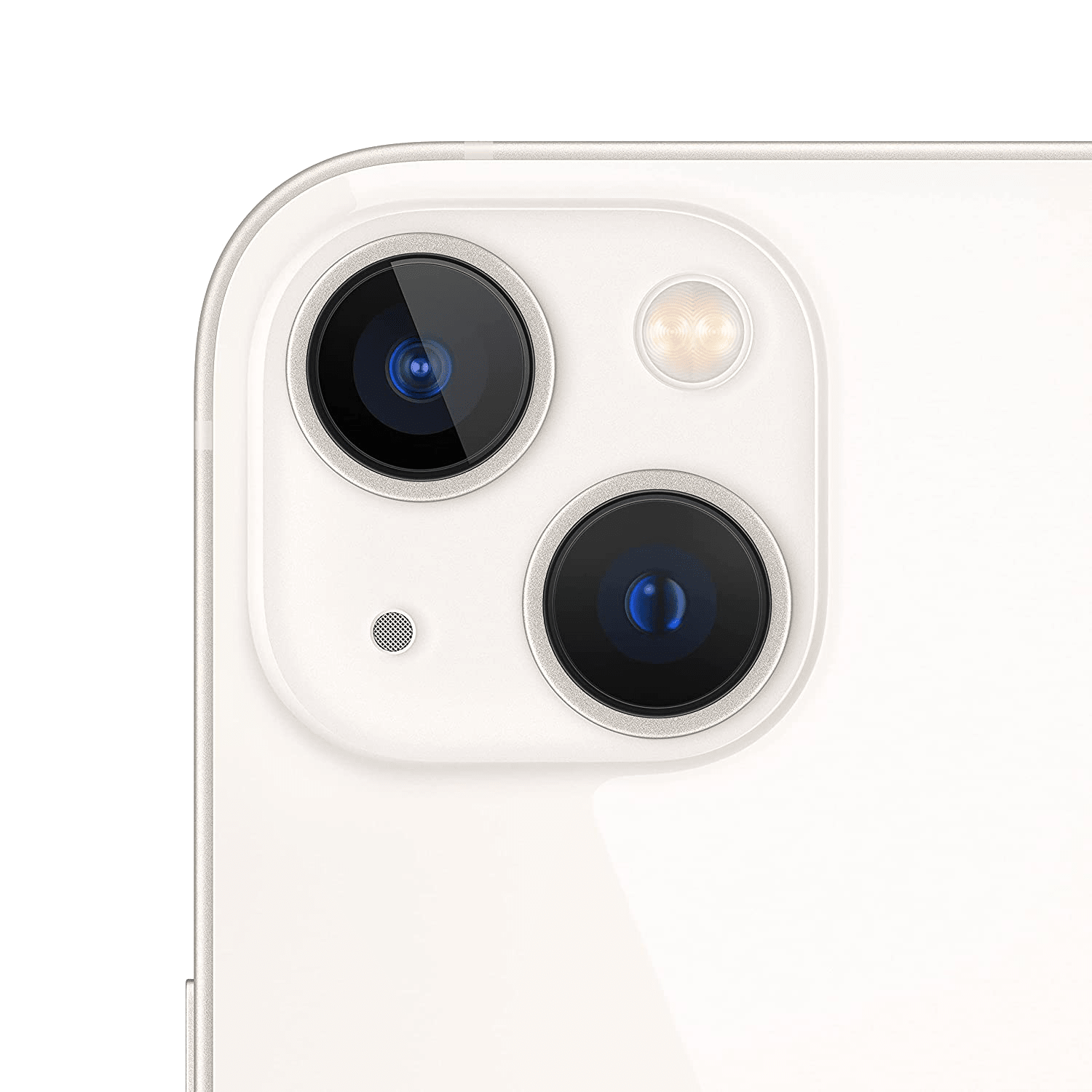
iPhone 13 – build quality and things to look out for
The iPhone 13 looks every bit as beautifully made and durable as the iPhone 12. It’s early days, but we’re yet to hear of any hardware or software issues. Historically, Apple has been quick to offer patches or – in the worst cases – repair programmes where iPhones have been disappointing, so it should be a safe buy.
It’s also worth mentioning that Apple is a leader when it comes to offering software updates. You can generally expect a minimum of seven years’ updates to iOS, by which time the phone itself is likely to be due for an upgrade. If you’re planning on keeping it that long, a case is a must, and a screen protector is a good idea too.
iPhone 13 – verdict
The iPhone 13 may be an evolution of the iPhone 12, but it’s a worthwhile upgrade. Going by Apple’s official prices, the new phone costs only 6-7% more than the old one. Despite that it has a better screen and camera, improved processor, and a much longer battery life. In this context, buying a new iPhone 12 now makes no sense – the only savings worth having are on a refurbished iPhone 12.
It’s much tougher choosing between the iPhone 13 and the iPhone 13 Pro. The flagship phone commands a £170 premium over the equivalent iPhone 13 model, with Apple charging £949 for the entry-level 128GB version. For this, you get an even better camera, a much quicker processor, a brighter, 120Hz screen and professional photo and video formats. If you can stretch your budget, buy an iPhone 13 Pro and enjoy the best smartphone yet. If not, buy an iPhone 13 and you definitely won’t be sorry.
